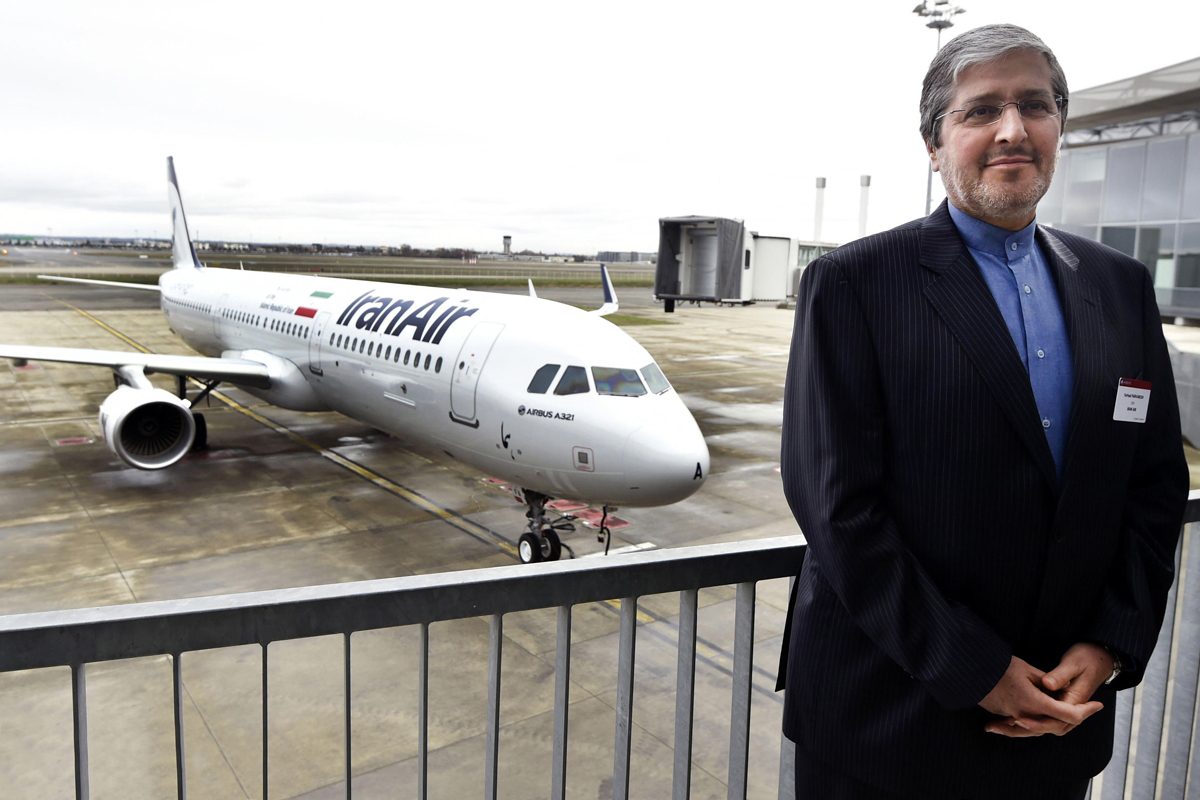Much as the government’s painstaking efforts to renew Iran’s aging air fleet have grabbed the attention at home and beyond borders, critics continue to downplay the move.
One of their criticisms questions the government’s decision to buy brand new aircraft instead of used ones. They argue that while the administration has been short of cash and faces huge challenges that have made the purchasing process lengthy, older jets at lower prices can be procured in a shorter time and with less hassle.
Iran Air CEO said Farhad Parvaresh, however, said studies and calculations show the aforementioned option is uneconomical over the long run.
“It is an obvious fact that productivity of an old fleet is not equal to a new one. Basically, these two [fleet age and efficiency] bear a logical relationship,” he wrote in the Persian economic daily Donya-e-Eqtesad.
“Placing a plane order without considering productivity is senseless,” he added.
Iran Air recently received its first single-aisle A321 and awaits the delivery of a wide-body A330 that has been spotted bearing the flag carrier’s livery and reportedly parked in France’s Chateauroux-Centre “Marcel Dassault” Airport.
The two planes are part of a multibillion dollar deal with the European planemaker, the draft agreement of which was signed following the lifting of nuclear sanctions on January 16, 2016, as part of a landmark deal Iran signed with world powers in 2015 to limit the scope of its nuclear works.
The Airbus contract was finalized late December, after prolonged negotiations amid obstacles resulting from technical, financial and political issues originating from both inside the country and abroad.
While the advocates have called the first Airbus delivery a “victory”, marking the first tangible results of the nuclear pact and breaking the walls of isolation surrounding Iran’s aviation industry for decades, the opponents described it as a “luxury” purchase, which would benefit the upper class.
Critics say fleet expansion and renewal should not be a top priority, adding that amid credit crunch resulting from low oil prices, the government could have saved a great deal of capital to use in the development of rails and roads instead, if it had purchased secondhand planes.
The airbus deal covers 100 jetliners, including 46 of the narrow-body A320 family that includes the A321 model, 38 long-haul A330s and 16 of Europe’s newest long-range model, the A350. It has an estimated catalogue value of $18-20 million, though Iran says it is paying no more than $10 billion to Airbus.
Prior to that deal, Iran Air finalized another contract with Airbus’ American rival Boeing to purchase 80 jets. The $16.6 billion order includes 50 of Boeing’s narrow-body 737max 8s, 15 wide-body 777-300ERs and 15 777-9s, which will be delivered to Iran Air over 10 years. Iran says it has received 50% discount on the order.
Close to 85% of the value of the two contracts will be covered by international financing institutions. And the remaining, officials say, will be covered mostly by Iran Air’s own resources as well as bond issuance, meaning the government has not allocated any extra budget for the plane deals.
“On paper, you should pay more than $100 million for a 280-seat plane, while with less than $15 million you can purchase an aircraft with more than 15 years of age, which has the same capabilities. But the fundamental factor here is the analysis of the payback period based on efficiency and the costs of repair and maintenance,” Parvaresh argued.
“Moreover, the planes are chosen based on business plans and the economic models of the airline placing the order. We should shop based on our needs.”
Aviation expert Ali Ghafouri said a direct purchase from the manufacturer means we can have access to technical support and after-sales services.
“They [the planemakers] have been obliged to train the Iranian workforce … This is not the case with secondhand aircraft,” he said.
Ghafouri added that Iran Air and a major part of Iran’s aviation sector attribute their strength in the 70s and 80s to the cooperation they had with Boeing before sanctions.
“For 20 years, Boeing’s 707, 727 and 747 models were our best planes,” he said.
In late 1970s, Iran Air used to be unrivaled in the Middle East in terms of profitability. The airline was also the second safest in the world. It was launched in 1961, following a merger between Iranian Airways—founded by private investors in the 40s—and Persian Air Services.
As of 1979, Iran Air, like other Iranian airlines, was blockaded by international sanctions. Although it successfully maintained its functionality for a few years, restrictions gradually drove the company to the verge of bankruptcy.
Ghafouri describes the plane purchases as “a smart move” made by the government, which would easily restore the cooperation Iran had with the global plane giants during Iran’s golden era of aviation.


